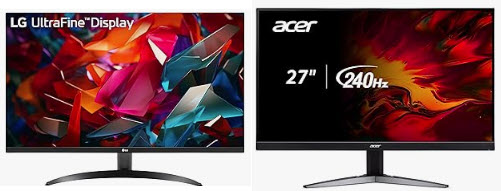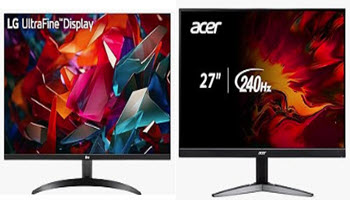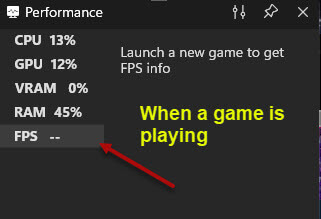The Need For High Refresh Rate Monitors
In the world of gaming, where every millisecond counts, the demand for high-refresh-rate monitors has surged exponentially. As technology continues to advance, these monitors are not only a luxury but a necessity for even casual gamers. The necessity of high-refresh-rate monitors helps more than just gamers; they cover many applications beyond gaming.
Gaming
This area is the driving force behind the need for “high refresh rate” monitors. Precision, speed, and visual clarity are paramount for gamers. High refresh rate monitors, typically ranging from 120Hz to 240 Hz, offer several advantages that make them indispensable for gamers.
Smoother Gameplay
A high refresh rate ensures the number of frames displayed per second is increased, resulting in smoother and more fluid gameplay. This is particularly crucial in fast-paced games such as first-person shooters (FPS) and racing games, where split-second reactions can determine victory or defeat.
Reduced Motion Blur
Motion blur can be a significant hindrance in gaming, causing images to appear smeared or unclear during rapid movements. High refresh rate monitors minimize motion blur, providing clearer and sharper visuals that enhance the gaming experience and improve reaction times.
A Competitive Edge
Do you really get a competitive edge using high refresh rate monitors? Absolutely!! It is hard to explain the difference between the common 60Hz monitors and a 120Hz or more commonly for gamers, 144Hz. It can’t make you a “good” player if you are not already good, but one player on 60Hz vs one on 144Hz is at a distinct disadvantage. They provide gamers with a competitive edge by reducing input lag and ensuring that actions are reflected on-screen almost instantaneously. This can be the difference between a headshot and a miss in high-stakes tournaments.
The Actual Difference
As I mentioned, it is impossible to show you the difference, but this site can show you the difference between 15, 30, and 60 fps. It is hard to express how much better 120 or 144 fps would look, but you get the idea. FPS and Hz are not directly related to Hz, which is a spec for monitors, while FPS is a spec for games. If you play a game at 150 fps, on a 60 Hz monitor, your pc will produce 150 fps, but your monitor will only display 60 of those images. Having a monitor that displays 144 fps can produce a smoother image, and using a monitor capable of 1440p resolution makes an even clearer image. There are several programs that will display the actual FPS a game is displaying. For example, pressing the [Win] + [G] keys will display the performance screen and show the current FPS of any running game.
When talking about gamers, most people tend to link that with First Person Shooters, multiple player teams, and fast action games like racing but other games like e-Sports benefit from high refresh rates. The eSports industry has witnessed exponential growth, with professional gamers and teams relying on the best equipment to enhance performance. High refresh rate monitors are a standard in eSports, contributing to the high level of gameplay showcased in tournaments worldwide.
Other Applications
Gamers might be the primary beneficiaries of high refresh rate monitors, but the benefits extend beyond the gaming world. Several other fields can leverage the advantages of high refresh rate technology including:
Video Editing and Animation
They can significantly improve the quality of work and the efficiency of editing processes, making them a valuable tool for creative professionals.
Virtual Reality (VR)
A higher refresh rate reduces motion sickness and provides a more immersive and realistic VR environment.
General Computing and Productivity
Even for general computing tasks and productivity, high refresh rate monitors can enhance the user experience. Smoother scrolling, clearer text, and reduced eye strain are some of the benefits that can be appreciated by everyday users.
Input Lag Reduction
High refresh rate monitors significantly reduce input lag, measured in milliseconds (ms). For instance, a 60Hz monitor may have an input lag of around 16.67ms, while a 240Hz monitor can reduce this to as low as 4.16ms. This reduction is crucial for gamers who require instantaneous feedback on their actions.
Improved Visual Clarity
Higher refresh rates lead to improved visual clarity, especially during fast movements. This can be quantified through motion tests, where high refresh rate monitors consistently show clearer and more discernible images compared to their 60Hz counterparts.
Summary
High refresh rate monitors have become a cornerstone in the realm of gaming, offering undeniable benefits that enhance gameplay and provide a competitive edge. Their applications extend beyond gaming into professional eSports, video editing, animation, virtual reality, and general computing. High refresh rate monitors are a significant advancement in display technology, not just a passing trend. The price of high refresh rate monitors currently makes them an excellent choice. 
Monitors like the Acer Nitro 27 WQHD 2560×1440 with up to 180 Hz, or even the Acer 17” curved with up to 170 Hz, or even for a slightly higher price, the LGUR500K 32 Inch 4K 3840×2160 is only $226. This makes choosing higher resolution and higher refresh rate monitors an easy decision.
—


I will be using your article to show people how AUDIO makes a difference. Especially when they say that it makes no difference by adding things like Audiophile cables and cords to a system. Since I have been building my music system, it has grown radically and after a few recent additions my speakers are almost becoming sentient. “THEY’RE ALIVE!”
Also note when talking about either Video or Audio, many additions don’t change much by themselves, but they are cumulative and shine when many things work together.
Thanks for your input Charles. I believe you are correct to point out the cumulative effect of serial improvements.